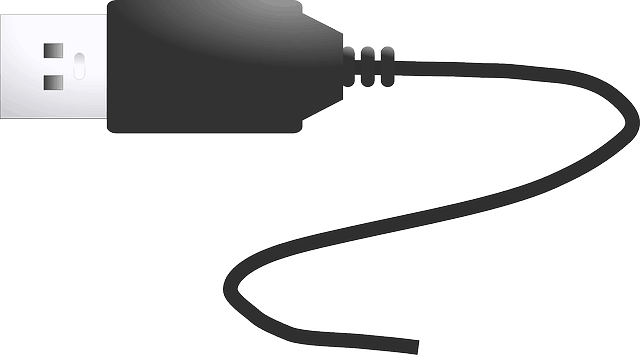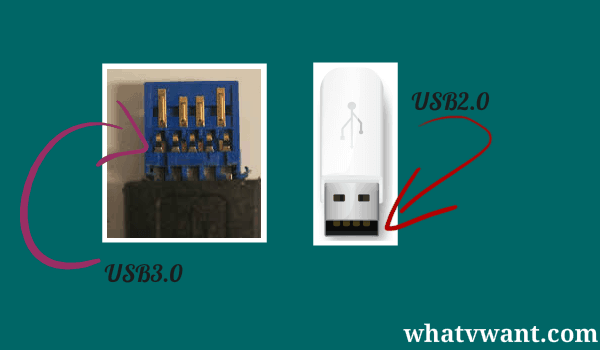You need to know the difference between USB 2.0 and 3.0 before you buy USB. Just read this tutorial for USB 2.0 vs USB 3.0 comparison. USB stands for Universal Serial Bus. It is the most popular and advanced interfacing device that is used to connect up to 127 peripherals to the computer. In the future, more and more devices are made with USB configuration.
The first USB 0.8 is released in December 1994 later more and more developments in this and it is continuing till now. Fast development in USB technologies, it acquires the benefits of IDE, SATA, PS/2, and more connectors. The early introduced USB 1.0 is followed by USB 2.0, USB 3.0, and USB 3.1. Among the four versions, the USB 2.0 and USB 3.0 are the most widely used. This article shows the difference between USB 2.0 and 3.0.
Difference between USB 2.0 and 3.0
1.Release date
USB 2.0 is released in April 2000. Which is further more development in USB’s technology to handle more number of peripherals a new USB 3.0 is released in November 2008.
2.Data transfer speed
USB 2.0 has different data transfer speed modes low-speed(1.5 Mbps),full speed(12 Mbps) and up to high-speed(480 Mbps) and super speed mode(5 Gbps) is added in USB 3.0. USB 3.0 adds super speed mode that it can achieve maximum 5 Gbps speed which is 10 times faster than USB 2.0 which is 480 Mbps.
- Read: How to Encrypt USB drive with a best free software
- How to hide files on USB and External drive with a free software
3.Actual data throughput
- In any communication system, data transfer needs some extra data with real data for getting error-free data transmission. In the same way in USB’s overhead bits are added with original data to detect and correct the data. Thus the data transfer speed of USB’s drops down.
- The actual data throughput of USB 3.0 is 3.2 Gbps at maximum speed while USB 2.0 has 280 Mbps due to overhead bits.
4.Data transferring method
USB 3.0 uses a full-duplex method, so it can transfer and receives data simultaneously between two devices. But USB 2.0 uses a half-duplex method and has no capacity to transfer and receive data simultaneously. USB 3.0 uses the full-duplex method, so it is faster than the half-duplex method in USB 2.0.
5.Cable length and wires

- USB 3.0 cables are available in different lengths and maximum length is 3 meters and having 9 copper wires within a cable is more than that of USB 2.0.
- But in USB 2.0 cable is available in the largest of 5 meters which is 2 meters longer than the USB 3.0 cable and USB 2.0 cable having four copper wires.
6.Compatibility
- Any USB version device can compatible with forwarding and backward USB versions. In the same way, USB 3.0 port and devices can compatible with any USB devices and ports, but the data transfer speed is less.
7.Power consumption
- USB 3.0 ports deliver 4.5 – 7 watts of power with 900 mA of current, which is slightly two times more than USB 2.0 is deliver 2.5 watts power with 500 mA current.
- USB 3.0 has high power ratings, so it can easy to interface with high power rated devices and future hardware.
8.Identification

- USB 3.0 port shape and size are the same as USB 2.0. But there is two difference which is visible to us.
- One is a plastic piece in the socket is blue in USB 3.0 while USB 2.0 has black color.
- Second is copper pins on the plastic piece are 9 divided into two rows (the first row has 4 pins and the second row has 5 pins) in USB 3.0 while USB 2.0 has 4 copper pins.
9.Price
Even USB 3.0 devices are more expensive than compared to USB 2.0 devices. But present-day prices of USB 3.0 are greatly reduced than compare with earlier days and the day-to-day cost of USB 3.0 is reducing due to manufacturing techniques.
- Related: How to make bootable USB from ISO image file
- 4 Easy ways to remove autorun virus from Pendrive and PC
Difference between USB 2.0 and 3.0 comparison chart
| Sl.no | Parameters | USB 2.0 | USB 3.0 |
| 1 | Release date | April 2000 | November 2008 |
| 2 | Data transfer Speed | HS(high-speed) up-to 480 Mbps(60 MBPS) | SS(super speed) up-to 5 Gbits(625 MBPS) |
| 3 | Actual data throughput | limited to 280 Mbps | limited to 3.2 Gbps |
| 4 | Data flow | unidirectional | bi-directional |
| 5 | Data transferring
method | Half duplex(It can either send or receive data at a time) | Full duplex(It can send and receive data simultaneously) |
| 6 | Cable length | Maximum 5 meters | Maximum 3 meters |
| 7 | Paths or wires | 4 wires in cable | 9 wires in cable |
| 8 | Compatibility | It can connect to USB 1.0 and USB 2.0 devices | It can capable to connect USB 1.0,2.0,3.0 devices |
| 9 | Power consumption | Maximum current 500 mA
maximum power delivery is 2.5 watts | Maximum current 900 mA
Power delivery 4.5-7 watts |
| 10 | Front view | Grey in color and 4 pins | Blue in color and 4 pins in 1st row and 5 pins in 2nd row |
| 11 | Price | less expensive than USB 3.0 | more expensive than USB 2.0 |
| 12 | How to Buy |
|
|
Reference source: Wikipedia
- Next topics to Read: Notebook Vs Laptop : differences you need to know
- Must read Digital Camera buying guide
- 7 Must have features in Smartphone
- Which laptop should I buy : Must read Laptop buying guide
I think, now you know the difference between USB 2.0 and 3.0. Please share this article, if you like it. Follow WhatVwant on Facebook and Twitter for more tips. Subscribe to whatvwant channel on YouTube for regular updates.

Very useful article.
Thanks a lot Jinka for posting such useful notes.
Keep on….
Best of Luck.